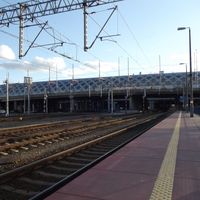Wilda
8.14

Overview
Wilda is the central part of Poznań, historically associated with a blend of cultural influences, particularly German and Polish. The first mentions of Wilda date back to 1253, and its development accelerated in the 19th century when it became an industrial district. A key point was Bismarck Square, today's Rynek Wildecki (Wilda Market Square), which divides Wilda into northern and southern parts—the former characterized by residential buildings, and the latter by industrial areas, including the Hipolit Cegielski Plants. The architecture of Wilda from the early 20th century stands out with standardized tenement houses featuring Art Nouveau details, and the characteristic wide sidewalks encouraged the creation of front gardens. Wilda is also an area rich in culture; it was home to cinemas, such as Kino Tęcza and the later Kino Wilda, and numerous singing circles and choirs flourished, reflecting the social activity of its residents. In 1956, Wilda became a symbolic site of workers' protests, which had a significant impact on Polish history. The long-standing diversity of its inhabitants, including Bambrzy settlers, has shaped the uniqueness of the local culture. The preserved architecture showcases various styles, from classicism to Art Nouveau, as well as numerous educational and religious institutions, such as churches and schools. Wilda is also known for its local street names, which are often abbreviated. An interesting fact is the installation of a multimedia totem at Maria Rataj Square in 2021, which provides information about the district's history. The area maintains active public transportation, facilitating the daily lives of its residents.
Location
Tickets
Powered by GetYourGuide
2025 Wizytor | All Rights Reserved


